Seattle Kraken and the Tacoma-based home service company says that giving back to the community is its mission and encourages others to donate to the hospital’s uncompensated care fund Harts Plumbers, Electricians and HVAC Technicians, a Tacoma-area top-rated home services provider founded in 2013, is pleased to announce it has raised nearly $13,000 for Seattle Read more
collaboration

Seattle Kraken and the Tacoma-based home service company says that giving back to the community is its mission and encourages others to donate to the hospital’s uncompensated care fund
Harts Plumbers, Electricians and HVAC Technicians, a Tacoma-area top-rated home services provider founded in 2013, is pleased to announce it has raised nearly $13,000 for Seattle Children’s Hospital Uncompensated Care Fund through a collaboration with the Seattle Kraken, a professional National Hockey League team, and iHeartRadio, a division of iHeartMedia Inc.

“We are honored that we can provide this donation to ensure that families whose children need the hospital’s services can focus on caring for their loved ones instead of worrying about the costs of care,” said Dan Hartsough, co-owner of Harts Plumbers, Electricians & HVAC Technicians. “At Harts, it’s our priority to give back to the community. By spotlighting a popular sports team in our donation efforts, we are also able to increase awareness about the Uncompensated Care Fund and its goal to care for this area’s children regardless of their families’ ability to pay.”
As part of the collaboration, Harts donates $50 for every goal scored by the Kraken. During the 2024-25 season, the Kraken scored 253 goals, resulting in a total donation of $12,650.
In 2024, Seattle Children’s Hospital provided $310.6 million in uncompensated care. The Uncompensated Care Fund allows the hospital to recover some of those costs through private donations.
In addition to its fundraising efforts with the Kraken, Harts has also developed an independent $50/$50 offer to encourage its customers to join them in supporting Seattle Children’s Hospital. When a customer donates a minimum of $50 to the fund during a service call, they receive a $50 discount on that day’s services.
“This encourages our customers to donate all year long,” Hartsough said. “We enjoy working with the community to help families get the care or services they need. Opportunities like this help us create a bond with the community we serve.”
Harts Plumbers, Electricians & HVAC Technicians provides residential plumbing services, top-notch electrical services, and outstanding heating and cooling services throughout the greater Seattle, Tacoma and now Tukwila areas. Earlier this year, the company was named to the Inc. 5000, a ranking of the fastest-growing private companies in America, for the fifth time.
To learn more about Harts Plumbers, Electricians & HVAC and the services it offers, call them at (253) 470-8766. This month, the company has published an electrical safety and inspection guide for homeowners on their blog at https://hartsservices.com/blog/electrical-safety-inspection/.
Sign up for FREE weekly newsletter: https://mechanical-hub.com/enewsletter/
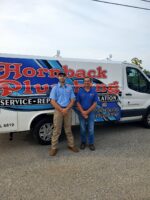
By Donnie Hornback I had always envisioned my son taking over my company after me. As parents, we dream of watching our children prosper in their careers and want to do whatever we can to help them succeed. When you own a business, having them follow in your footsteps seems like the perfect way to Read more
By Donnie Hornback
I had always envisioned my son taking over my company after me. As parents, we dream of watching our children prosper in their careers and want to do whatever we can to help them succeed. When you own a business, having them follow in your footsteps seems like the perfect way to ensure their success.
I saw my company, Hornback Plumbing, as a way to create a family legacy. When my son Jesse began working with me, it filled me with immense pride. Seeing my career and business becoming something we could share together was thrilling and exactly what I had hoped would happen. Soon, I could hand the reins over to him and step away.
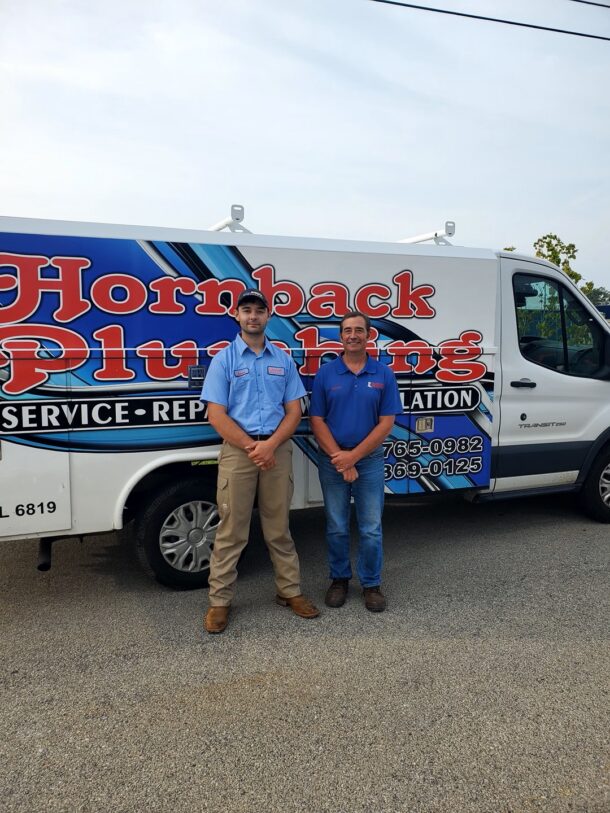
(eft to right) Donnie and Jesse Hornback.
What I didn’t consider is that this may not have been what he wanted.
Jesse had been working to impress me. He started taking on responsibilities he thought I wanted him to take on and shied away from different sectors of the company where his interests truly lay. He was working hard, but that’s all I could see; I didn’t realize that his heart wasn’t in it.
In 2022, after several conversations with Jesse, I decided to sell the company to Leap Partners. But it wasn’t until months later that Jesse confided in me that he had been overwhelmed by the idea of succeeding me. The sale came as a relief for him and ended up changing both of our lives for the better. Since the sale, I’ve been able to watch him become independent and flourish in his career — freed from the burden of my expectations.
It was an eye-opening moment for me and allowed me to gain perspective on the things I learned about the special nature of working so closely with one of your children.
Collaboration is vital
Working with your children in an intensive industry like plumbing can create a working relationship that’s overbearing for them. You can’t just move the same parent-child dynamic into business and expect it to work. Make sure you keep an open dialogue and create an atmosphere of collaboration. Being stubborn with your own ideas all the time won’t work. There are likely times when they might know better than you.
I remember one instance when Jesse was adamant that we needed a heavier truck to pull an excavator. While I disagreed, I trusted his judgment, and it turned out he was right. It was the perfect truck for that project and is one that will continue to benefit our company for years to come.
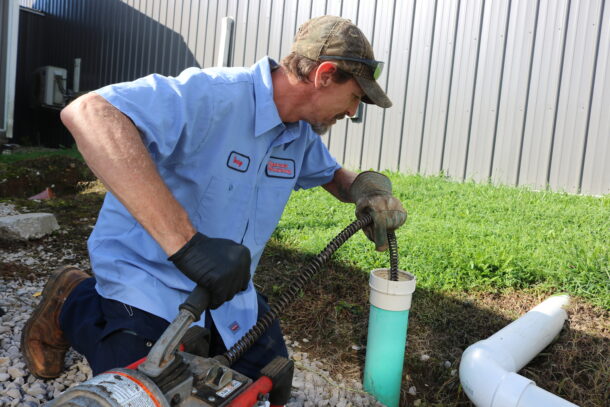
Failure can be good
I found one of the hardest parts of working so closely with your children is letting them learn from their mistakes. As parents, it’s instinctive to protect them; but they must have the freedom to learn on their own and make their own mistakes. Don’t throw them to the wolves, but minor setbacks can be perfect learning opportunities. Sometimes, failure is the best way to reach success.
Above all else, trust them
The best advice I can give is simple: Trust your kids. Understand that what you want might be entirely different from the path they see for themselves. After hearing Jesse’s relief about the sale, I realized how essential it is to have a transparent relationship when working with your children. I didn’t have this kind of relationship with him before, and now I can see this had been stifling his personal development.
It’s OK for them to not want what you want. Finding a partner like Leap that helped us walk through these challenges, while supporting our company, was such a relief. They helped our company through the transition and provided support for us along the way.
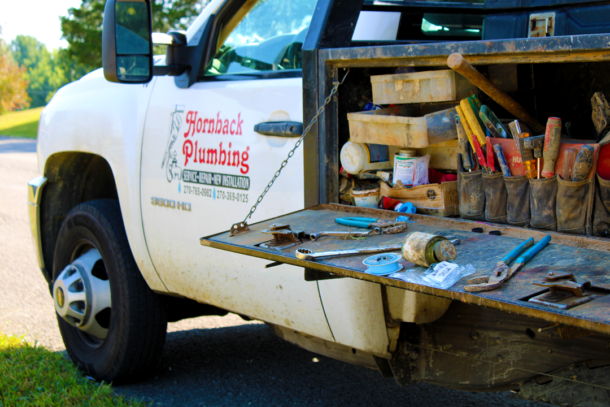
Since the acquisition, I have seen Jesse prosper in his career. He’s found his passion within the company without having the pressure of becoming the boss and can now pursue his own career path.
Stepping back from what I wanted allowed my company’s legacy to remain intact and alleviated the pressure on Jesse. Now, with the help and guidance of Leap Partners, he’s in a position where he can truly thrive professionally — in the way he wants to. And I’ve never been prouder to be his father.
Author Bio: Donnie Hornback is the general manager of Hornback Plumbing, a member of the Leap Partners family, operating in South Central Kentucky. He started the company in 2005 and has since expanded his services to include more than 20 home services associates, including his son Jesse.

In today’s ever-changing business landscape, strengthening the contractor/wholesaler channel is critical to survival. A recent general session at PHCC CONNECT drilled deep into the conversation. “How does my supplier make me look like a rock star?” asked Dan Callies, President, Oak Creek Plumbing, Inc., Oak Creek, Wis., during the “Collaborative Connections: Strengthening Supplier-Contractor Relationships for Read more
In today’s ever-changing business landscape, strengthening the contractor/wholesaler channel is critical to survival. A recent general session at PHCC CONNECT drilled deep into the conversation.
“How does my supplier make me look like a rock star?” asked Dan Callies, President, Oak Creek Plumbing, Inc., Oak Creek, Wis., during the “Collaborative Connections: Strengthening Supplier-Contractor Relationships for Success” general session at the PHCC Connect show last month in Cleveland. Joining Dan on stage was an all-star cast featuring emcee Robert Grim, Senior Vice President, Global Sales, InSinkErator, Mount Pleasant, Wis.; Scott Robertson, President, Robertson Heating Supply Co., Alliance, Ohio; Kathryn Poehling-Seymour, President and CEO, First Supply LLC, Madison, Wis.; and Jason Pritchard, Co-Founder, PriCor Technologies, Seattle.
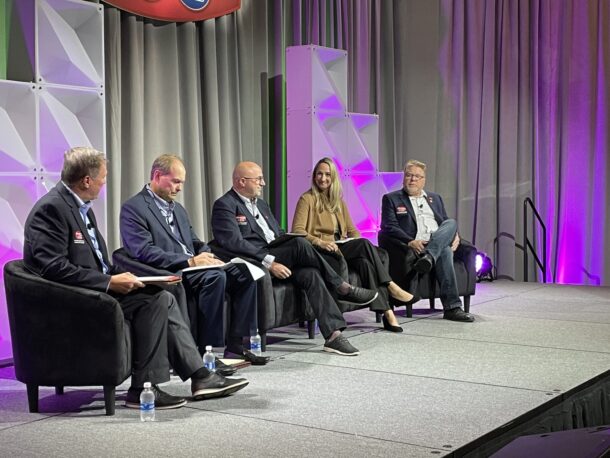
From l to r: Robert Grim, Senior Vice President, Global Sales, InSinkErator, Mount Pleasant, Wis.; Scott Robertson, President, Robertson Heating Supply Co., Alliance, Ohio; Kathryn Poehling-Seymour, President and CEO, First Supply LLC, Madison, Wis.; and Jason Pritchard, Co-Founder, PriCor Technologies, Seattle.
That’s the million-dollar question, right? How does the supplier/contractor relationship make each other better at his/her jobs, and contribute to the overall company mission? Throw in the manufacturer here too, for that matter. Some of the fundamental tenets for strengthening that relationship—that were discussed at the general session—included collaboration, value distribution services, availability, technology and training, and expectations.
Can’t We Just Get Along?
InSinkErator’s Grim asked about the value of working together, and Poehling-Seymour stressed that collaboration is critical in this relationship. “We must understand the pain points and what is working and what isn’t.”
And with that comes better communication. “We are in a relationship industry where communication is imperative,” said Pritchard. If that means paying a bit more for that stronger relationship, then so be it, intimated Pritchard.
Callies echoed this but stressed right communication over more communication. The common thought is “wide equals pricing and deep equals relationships,” said Callies.
So, let’s go deep as an industry. When asked what the landscape is going to look like in five-to-10 years for the contractor/wholesaler/manufacturer, people, processes and services matter. Through trust and preferences, “Relationships are going to matter more,” said Pritchard.
What about expectations? “We want to be around for another 10-20 years,” said Robertson. “We want to see contractor loyalty in the channel,” continued Robertson. “And that means a loyalty to the wholesaler in your particular market.”
Stock Market
Let’s not avoid the 800-lb. gorilla in the room. With contractor loyalty, comes availability and pricing. For Robertson, inventory presence is critical so much so that Robertson Supply holds inventory for approximately 100-125 days. “Listen, we don’t make or install anything so we better be damn good at inventory management,” said Robertson.
Value distribution services ties right in here, “It’s about right product, right time, right price,” said Poehling-Seymour. “Be that added value family.”
Tech Relevant
It’s imperative for these brick-and-mortar supply houses to stay on top of the latest trends and technology. “The key to survival is to stay progressive and current,” said Robertson. Upon further self-reflection, “how do we make it easier to find product?” asked Robertson. “This includes being totally integrated with our contractor partners and researching and developing a technology that contractors will use.”
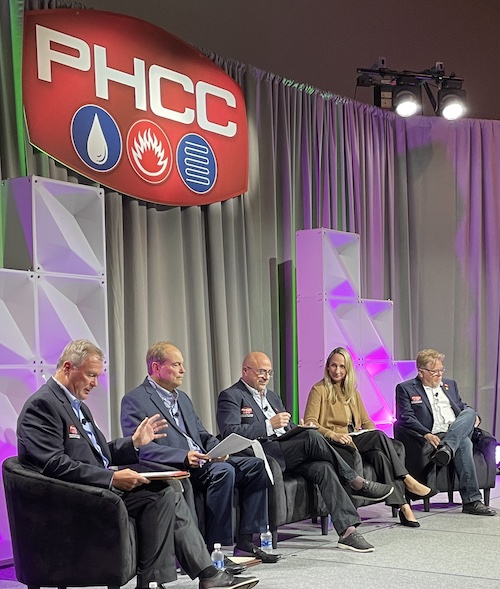 Poehling-Seymour added that First Supply LLC institutes “customer councils” to continuously get a pulse of the customer. “We try to make sense of the noise,” said Poehling- Seymour. “Where is critical mass in that noise so we can make the right decisions?”
Poehling-Seymour added that First Supply LLC institutes “customer councils” to continuously get a pulse of the customer. “We try to make sense of the noise,” said Poehling- Seymour. “Where is critical mass in that noise so we can make the right decisions?”
Unless you’ve been riding under a technology rock, Artificial Intelligence (AI) has dominated the talk in most every corner of the tech universe, and it has crept into the PHVAC industry as well. While artificial intelligence, in and of itself, can sound scary and intimidating, according to Poehling-Seymour, “AI has real application in the industry purchasing and predictability.”
For suppliers, it’s imperative to keep all “moving-forward” options available, as Robertson suggests. This includes, and nothing new and earth shattering in our industry, maximizing e-commerce when necessary. “E-commerce presents the right tools at your fingertips,” said Poehling-Seymour. Robertson adds that for his company, online ordering represents 20% volume. Other tech advancements, which included the use of QR codes to streamline processes and online training, were mentioned.
Training Room
InSinkErator’s Grim offered that in today’s business landscape, there is more need for training.
In fact, says Grim, PHCC members ask for training and education now more than ever. “With evolution and advancement comes training and education,” said Callies. Doubling down on this, Poehling-Seymour stated that First Supply opened a training center and offers a variety of training through streaming content.
Callies suggests that people still are the cogs in the wheel that makes this industry run, “Digital when you can, verbal when you must.” Pritchard and Poehler-Seymour agree, saying that people and the process are key through direct communication, and that includes all members of the channel—contractors, manufacturers, all the way down to the inside and outside sales, drivers, dispatchers, etc. within each organization.
So, let’s go back to the original question: How do we all make each other look like rock stars? Consuming all of the above, and, quite simply, “look for successes and build on them,” said Callies.
This article originally ran in PHCC’s Solutions magazine. You can learn more about the Plumbing-Heating-Cooling-Contractors (PHCC) Association at www.phccweb.org.

Rinnai America Corporation announces a new innovation initiative that will drive product advancements for the U.S. and Canadian markets. With this new direction, Ray VanAssche has been promoted to Vice President of Innovation, a new department that combines engineering and product management. The new Innovation Department will enable the engineering and product management teams to collaborate Read more
Rinnai America Corporation announces a new innovation initiative that will drive product advancements for the U.S. and Canadian markets. With this new direction, Ray VanAssche has been promoted to Vice President of Innovation, a new department that combines engineering and product management.
 The new Innovation Department will enable the engineering and product management teams to collaborate on the product roadmap and generate leading ideas and solutions for existing and new markets.
The new Innovation Department will enable the engineering and product management teams to collaborate on the product roadmap and generate leading ideas and solutions for existing and new markets.
“For years, Rinnai America Corporation has adapted Rinnai Japan products for the North American market. With a recent shift in strategy to be the product and technology leader in North America, promoting Ray will allow us to meet this goal. His proven track record of market-leading product development, leadership and progressive ideation will set Rinnai up for continued success,” saidFrank Windsor, Chief Operating Officer for Rinnai. “Our vision is enhancing lives by changing the way water is heated. Becoming the leader in product innovation in North America will strengthen our commitment to the water heating industry and dedication to our customers.”
VanAssche has an extensive background working with market-leading, innovating organizations such as General Motors, Tesla Motors and The Coca-Cola Company.
“I am proud and truly honored to lead Rinnai America’s highly talented product management and product development teams. This new role provides a unique opportunity to address market needs by integrating best-in-class products with innovative solutions which positively impact consumers’ lives,” said VanAssche.
This strategy aligns well with the timeline for Rinnai’s new 300,000-square-foot facility in Griffin, Georgia, which is slated for completion in Q4 of 2020. Rinnai is the first major tankless water heater manufacturer in North America and will produce both residential and commercial products at the new manufacturing site. Rinnai began the first phase of its manufacturing journey in a temporary facility in Griffin, Georgia earlier this year. The facility produced its first tankless water heater on April 4, 2018, and has consistently exceeded production and quality goals since then.
In addition, Rinnai’s new North American headquarters grand opening is planned for September 2018. The new North America Innovation and Training Center construction will start once the new headquarters is opened.
For more information on Rinnai and its portfolio of products, visit rinnai.us.
